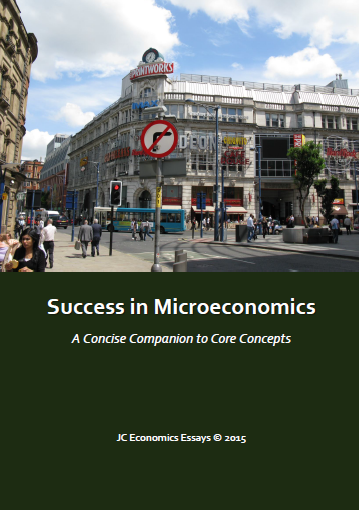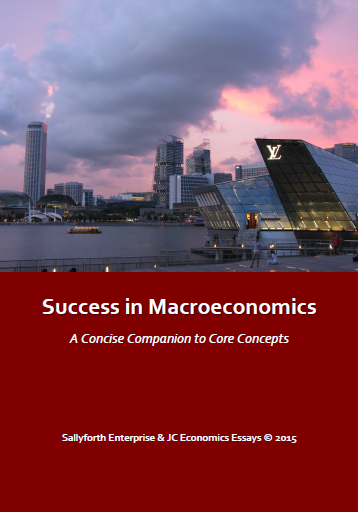(a) With reference to the market for private transport in Singapore
This essay discusses whether the demand for private cars is elastic or inelastic, with respect to both price and income. First, some definitions are in order. Price elasticity of demand (PED) measures the responsiveness of quantity demanded to a change in the price of the good, ceteris paribus. It is calculated by taking the percentage change in quantity demanded over the percentage change in price, ceteris paribus. Also, income elasticity of demand (YED) is defined as the measure of the responsiveness of demand to a change in income, ceteris paribus. It is calculated by taking the percentage change in demand over the percentage change in income, ceteris paribus. This economics paper discusses whether the demand for private cars is likely to be elastic or inelastic with respect to price and income, using the concepts of PED and YED.
Firstly, let us discuss PED, and whether the demand for cars is elastic or inelastic. According to economic theory, demand is likely to be relatively more elastic if a good is not considered a necessity, and more inelastic if a good is considered a necessity. Firstly, with a well-developed public transportation network, Singapore residents have many alternatives or substitutes to driving as they can travel to almost any part of the country by bus, train, or taxi. With the new Circle Line and the upcoming Downtown Line in Singapore, the public rail network has become even more comprehensive and provides wide reach and access to the public. Given the ready availability and accessibility of public transport in Singapore, there are viable substitutes to travelling by car, and thus private transport is definitely not a necessity but more of a luxury. So the overall demand for private cars is arguably likely to be price elastic.
Secondly, according to economic theory, demand is more likely to be relatively more elastic if it takes up a larger proportion of one's income, and vice versa. Also, for most households, the combined cost of car ownership and usage due to the monthly installments for the car loan, car park fees, maintenance costs, and the ERP (Electronic Road Pricing) charges typically forms a large proportion of their income. If a good forms a large proportion of one’s income, then the demand for the good tends to be more price elastic, and therefore, it can be strongly argued that the demand for cars in Singapore is likely to be price elastic as well, given the high costs of car ownership and usage taking up a large proportion of one's income.
However, for some people, public transport is arguably not a close substitute, and driving is considered as a necessity, perhaps because they are rich enough to be more than able to afford a car, or perhaps they work in areas which are simply too inaccessible by public transport. For example, air force pilots tend to work in far-off places, as airbases are often not easily accessible by public transport. Hence, for such higher income individuals, or individuals who work in inaccessible places, their demand for cars is probably less price elastic. Also, for richer individuals and households, the cost of car ownership and usage forms a smaller proportion of their income so their demand for cars is also arguably possibly less price elastic.
Secondly, let us discuss YED, and whether the demand for cars in Singapore is income elastic or inelastic. A normal necessity good has 0 < YED < 1, which means that it is income inelastic, while a normal luxury good has YED > 1, which means that it is income elastic. Compared to other transport modes like buses, trains, and taxis, private cars are likely to be perceived by most people to be the highest quality among all the various modes of transport because cars are simply faster, more comfortable, and offer more privacy. Hence, when income rises, people are more likely to switch away from other transport modes to travelling by private car. Hence, a private car in Singapore is likely to be a normal luxury rather than a normal necessity. Thus a rise in income leads to a more then proportionate increase in demand for private cars.
However, as income rises, car buyers tend to upgrade from smaller cars to bigger and more luxurious ones, for example from Cherry QQs to BMWs, and also from less prestigious brands to more prestigious ones, so higher end car models and brands tend to be more income elastic.
In conclusion, the demand for cars is likely to be price elastic, and at the same time, it is also likely to be income elastic. In Singapore, with a dense transport network for a small land area, people will view public transport as a viable alternative to cars, making the demand for cars relatively more price elastic. Furthermore, car costs are a large proportion of people's incomes in Singapore, given the high costs of car ownership and usage charges in Singapore. On the other hand, car buyers as a whole are much richer than most segments of Singaporean society, and would tend to switch to buying more luxurious cars with an increase in income. This is supported by the fact that Singapore’s economic growth was high in 2011. Hence, in the final analysis, my view is that the demand for cars in Singapore is likely to be price elastic and income elastic.
H1, H2, H3 A levels JC Economics Essays - Tutor's Commentary: This is a very well structured, clear cut, and well written economics paper. It was edited only for some simple grammar, spelling, and typos issues, but composed mainly by the student, given her understanding of the issue and the context. Observe the excellent use of examples that are pertinent to Singapore's case and context, which addresses the requirements of the essay question. At the same time, observe the Economics behind the writing - there is solid economic theory at the A level standard. A well-written, well-thought out economics paper should look something like this ... but also do remember as usual that in my website Economics diagrams are not included. Should there be a diagram here? Why should there be a diagram, and why not? What economics diagram would you draw, and what would it show exactly, and why? Think about it. Perhaps you should also read the next post, which addresses the next part (part (b)) of the essay question. Always bear in mind that you should read with a critical, thinking mind. Thanks for reading and cheers.
Special thanks to AG for her kind and useful contribution. She achieved a grade A for her H2 Economics at A levels and then proceeded to the Nanyang Technological University to read mathematics, on a Ministry of Education Teaching Award.
Special thanks to AG for her kind and useful contribution. She achieved a grade A for her H2 Economics at A levels and then proceeded to the Nanyang Technological University to read mathematics, on a Ministry of Education Teaching Award.



